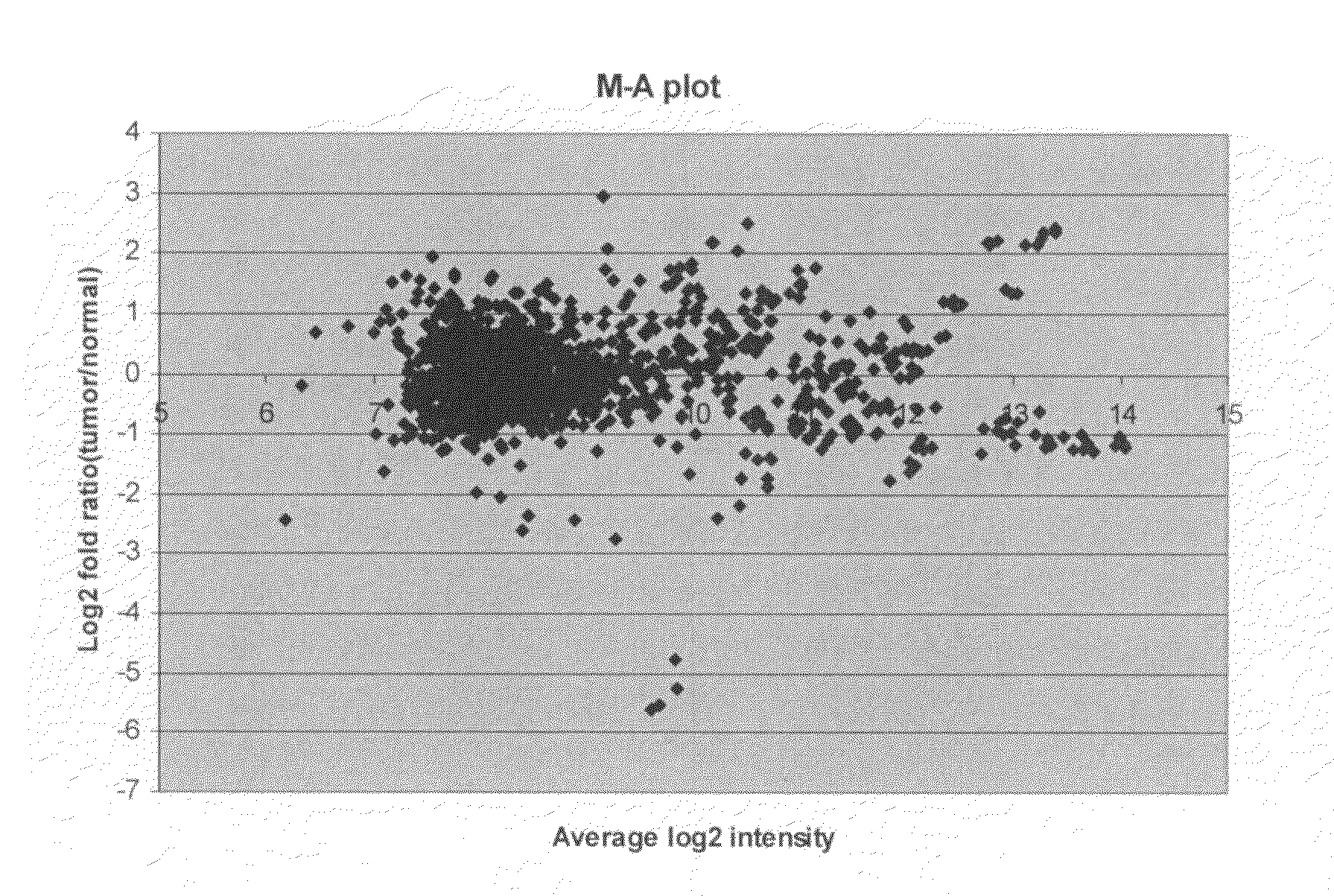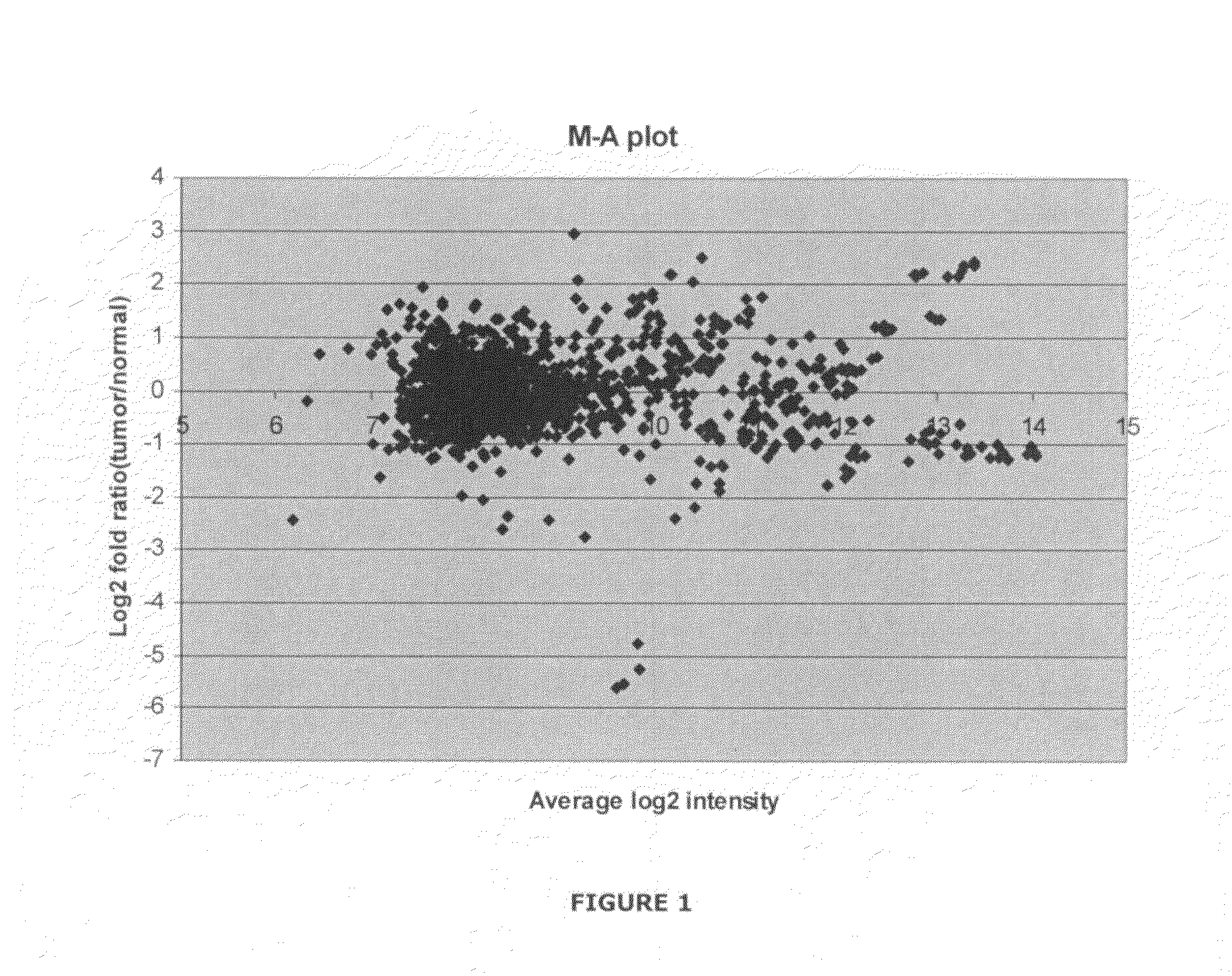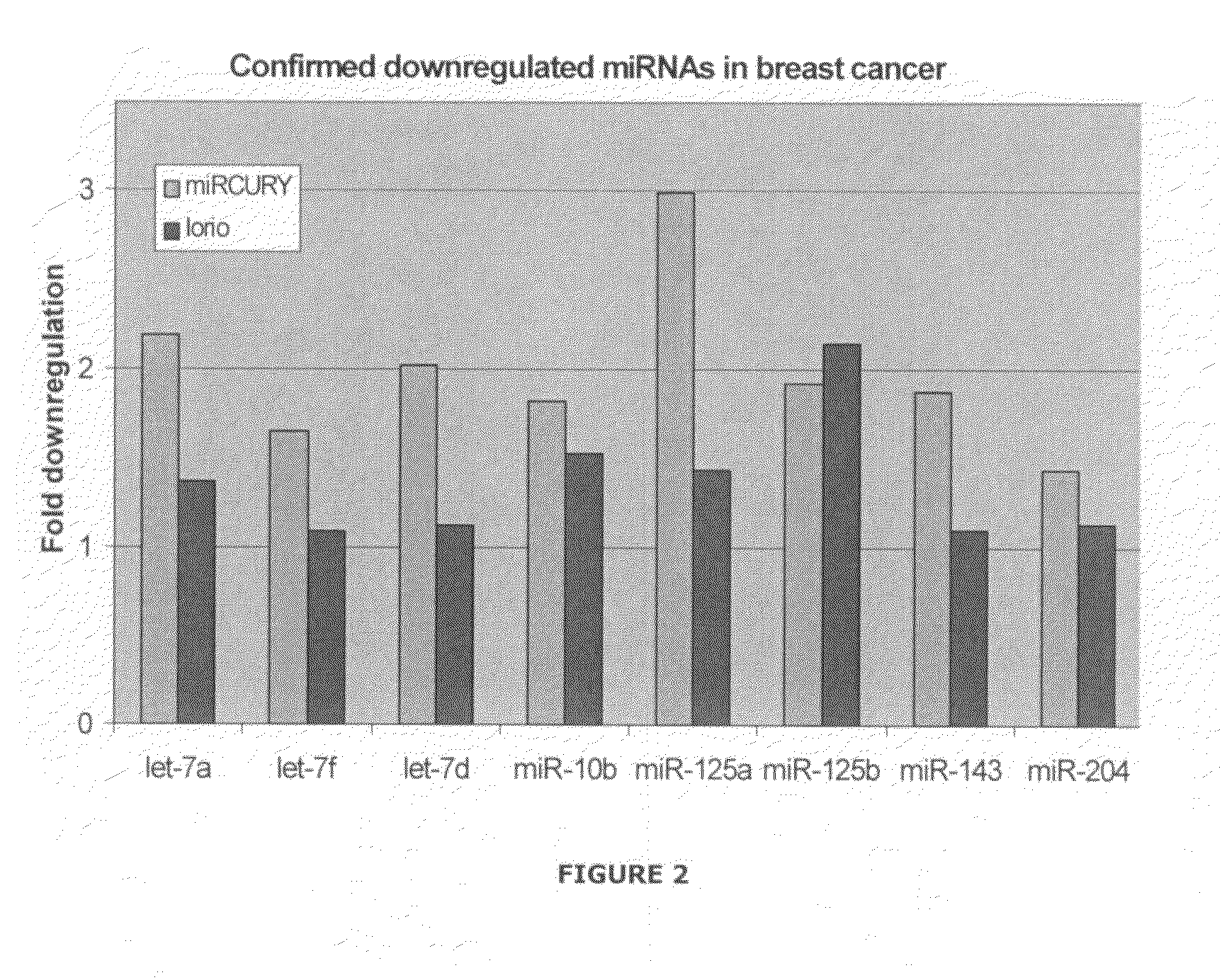Novel oligonucleotide compositions and probe sequences useful for detection and analysis of non coding RNAs associated with cancer
a technology of oligonucleotide composition and probe sequence, which is applied in the field of detection and analysis of target nucleotide sequences associated with cancer, can solve the problems of inability to detect and analyze the target nucleotide sequence, the initial treatment of modest benefits and some troubling side effects, and the inability to achieve a profound response or durable remission in all cancer patients
- Summary
- Abstract
- Description
- Claims
- Application Information
AI Technical Summary
Benefits of technology
Problems solved by technology
Method used
Image
Examples
embodiments
[0356]1. A method for the characterisation of breast cancer, in a sample derived or obtained from a mammal, preferably a human being, said method comprising the following steps:[0357]a. Obtaining at least one test sample, such as a biopsy sample, of a tumor or of a putative tumor, from a patient, and optionally at least one control sample;[0358]b. Presenting a first population of nucleic acid molecules, prepared from said at least one test sample, and optionally a second population of nucleic acid molecules, prepared from said control sample;[0359]c. Hybridizing said first population of target molecules, and optionally said second population of target molecules, against at least one detection probe, wherein said at least one detection probe comprises a recognition sequence derived from a non-coding RNA sequence associated with said cancer, such as a non-coding RNA sequence selected from the group consisting of microRNA (miRNA), siRNA, piRNA, and snRNA, and precursor sequences thereo...
example 1
[0459]Molecular Classification of Breast Cancer by MicroRNA Signatures
[0460]breast cancer is the most frequent form of cancer among women worldwide. Currently, treatment and prognosis is based on clinical and histo-pathological graduation, such as TNM classification (tumor size, lymph node and distant metastases status) and estrogen receptor status. To improve both the selection of therapy and the evaluation of treatment response, more accurate determinants for prognosis and response, such as molecular tumor markers, are needed. The primary aim of this study was to study the expression patterns of microRNAs (miRNAs) in tumors and normal breast tissue to identify new molecular markers of breast cancer.
[0461]Biopsies from primary tumors and from the proximal tissue (1 cm from the border zone of tumor) were collected from female patients (age 55-69) undergoing surgery for invasive ductal carcinoma. Total-RNA was extracted following the “Fast RNA GREEN” protocol from Bio101. Assessment ...
example 2
[0503]List of LNA-Substituted Detection Probes for Detection of MicroRNAs Associated with Breast Cancer in Humans.
[0504]LNA nucleotides are depicted by capital letters, DNA nucleotides by lowercase letters, C denotes LNA methyl-cytosine. The detection probes can be used to detect and analyze conserved vertebrate miRNAs, such as human miRNAs by RNA in situ hybridization, Northern blot analysis and by silencing using the probes as miRNA inhibitors. The LNA-modified probes can be conjugated with a variety of haptens or fluorochromes for miRNA in situ hybridization using standard methods. 5′-end labeling using T4 polynucleotide kinase and gamma-32P-ATP can be carried out by standard methods for Northern blot analysis. In addition, the LNA-modified probe sequences can be used as capture sequences for expression profiling by LNA oligonucleotide microarrays. Covalent attachment to the solid surfaces of the capture probes can be accomplished by incorporating a NH2—C6— or a NH2—C6-hexaethyle...
PUM
| Property | Measurement | Unit |
|---|---|---|
| Length | aaaaa | aaaaa |
| Length | aaaaa | aaaaa |
| Length | aaaaa | aaaaa |
Abstract
Description
Claims
Application Information
 Login to View More
Login to View More - R&D
- Intellectual Property
- Life Sciences
- Materials
- Tech Scout
- Unparalleled Data Quality
- Higher Quality Content
- 60% Fewer Hallucinations
Browse by: Latest US Patents, China's latest patents, Technical Efficacy Thesaurus, Application Domain, Technology Topic, Popular Technical Reports.
© 2025 PatSnap. All rights reserved.Legal|Privacy policy|Modern Slavery Act Transparency Statement|Sitemap|About US| Contact US: help@patsnap.com



